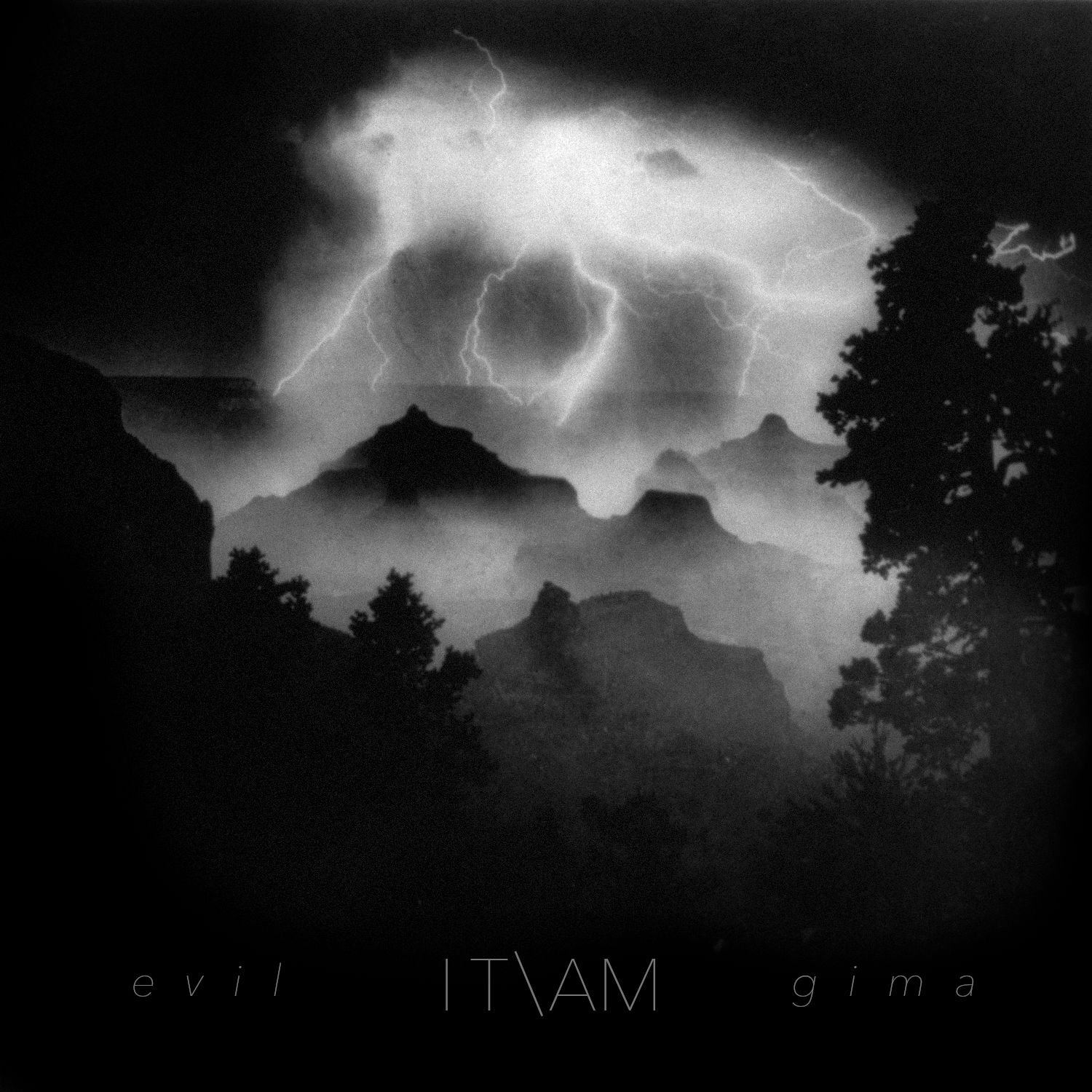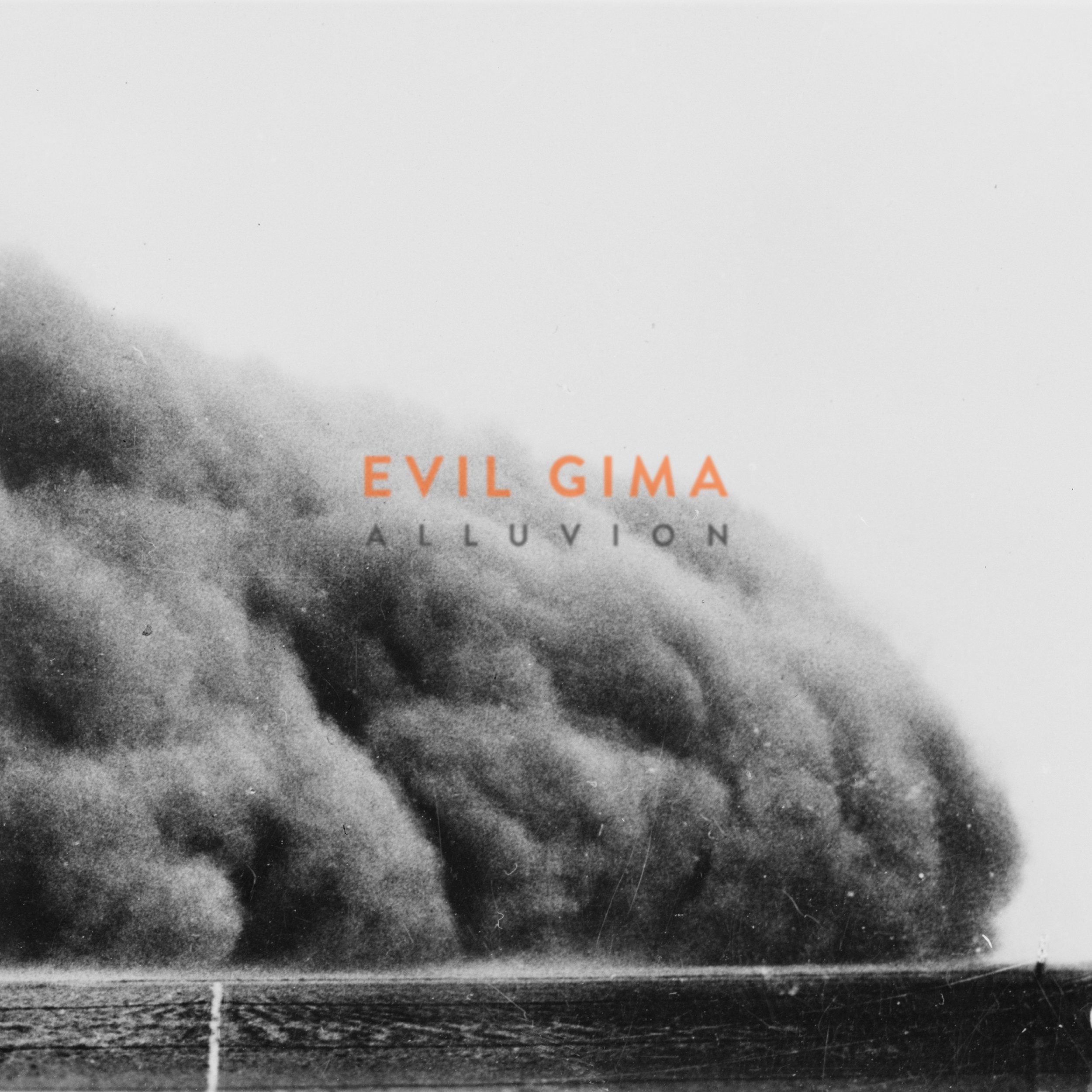Elements EP Track List:
Enthalpy:
“Enthalpy,” the opening track from Evil Gima’s “Elements” EP, begins like a slow exhalation of energy, an awakening built on tension, restraint, and atmosphere. The moment the track opens, the listener is engulfed by a thick wave of ambient distortion, where muted drones rise and fall with unpredictable grace, as though the air itself has been shaped into sound. The production feels organic yet entirely alien; layers of modular synthesis intertwine with subtle analog noise, forming a sonic texture that is both tactile and ephemeral. Every oscillation seems alive, breathing in rhythm with the subtle low-end pulses that emerge beneath the surface. The mix is intentionally spacious, inviting the listener to step inside its sonic environment rather than merely observe it. It’s a haunting entry point, one that immediately establishes the EP’s cinematic scope and experimental courage. The overall timbre recalls the works of dark ambient pioneers, yet Evil Gima transforms that influence into something rawer and more personal, like an emotional storm restrained by discipline.
As “Enthalpy” progresses, its structure unfolds less like a conventional composition and more like a gradual chemical reaction. Hissing layers of static and subharmonic waves create a feeling of volatile pressure, building in intensity without ever breaking into chaos. Subtle percussive elements, soft metallic clangs and distant thuds, appear like echoes from a vast industrial landscape, giving the track a mechanical heartbeat beneath its drifting synth textures. The duo’s mastery of modular manipulation is evident in how sound elements shift seamlessly: one frequency decays into another, one pulse morphs into a dissonant hum, yet the transitions remain fluid. The harmonic design plays with dissonance and microtonal intervals, creating a sense of emotional unease that deepens with every passing minute. Despite its experimental surface, there’s an undeniable logic in its progression; every sound feels deliberate, every silence weighted. The tension that defines the piece becomes a narrative force, carrying the listener from stillness to turbulence, from intimacy to expanse, without ever relying on melody or rhythm in a traditional sense.
By its closing moments, “Enthalpy” has transformed from a sound experiment into a full sensory experience. What began as abstract ambience evolves into a dense wall of emotion, where distortion and harmony coexist in fragile balance. The track feels like the sonic representation of energy contained and released, the very concept of enthalpy rendered audible. The low frequencies swell like molten heat beneath layers of atmospheric resonance, while high, whispering tones flutter above, creating a chilling contrast that evokes both calm and discomfort. Evil Gima’s decision to leave rough edges intact, tape hiss, feedback hums, and uneven oscillations, adds authenticity to the soundscape, emphasizing their philosophy that imperfection is beauty. In its final seconds, as the textures fade into silence, the listener is left with the lingering vibration of something profound, an emotional residue that feels simultaneously mechanical and human. “Enthalpy” stands not only as the heart of “Elements”, but also as a declaration of Evil Gima’s artistry: a fearless pursuit of sonic truth, where every noise tells a story and every silence holds meaning.
Nuclear Charge:
“Nuclear Charge,” the third track from Evil Gima’s “Elements” EP, detonates with a calculated sense of energy, embodying the EP’s title concept with precision and sonic power. From its opening seconds, the track asserts itself with a restless, vibrating pulse, an oscillating frequency that feels like the buildup of atomic pressure waiting to explode. The soundscape is dark, rich, and immersive, built around layers of modular synthesis that shift and collide in unpredictable ways. The low-end hum feels radioactive, a thick bass resonance that anchors the entire track, while the upper registers flicker like electrical discharges, snapping and hissing with mechanical urgency. The production maintains a delicate balance between control and chaos; every sound seems on the verge of collapse, yet it never loses compositional direction. This duality, between stability and volatility, perfectly mirrors the song’s title, giving “Nuclear Charge” a thematic cohesion that extends beyond sound into atmosphere and emotion. It’s an aural representation of stored energy, release, and the thin line between beauty and destruction.
Midway through “Nuclear Charge”, Evil Gima intensify the tension with rhythmic mutations and sonic layering that feel both scientific and primal. There’s no conventional percussion, yet the sense of rhythm is undeniable, built from recurring pulses, modulated drones, and granular textures that function like invisible beats. The duo manipulates frequencies with surgical precision, bending tones in and out of phase until they form ghostly patterns that resemble a heartbeat under duress. Small bursts of white noise punctuate the mix like radiation spikes, while faint metallic textures ripple across the stereo field, creating a sensation of movement and depth. The mix is immersive, encouraging the listener to perceive not just with the ears but with the body, as subfrequencies resonate in the chest and skull. The progression feels intentional, methodical, like a nuclear process unfolding step by step. As the track evolves, waves of distortion rise and recede in cycles, mirroring the unstable balance of energy found within its title. This careful dynamic control keeps the listener suspended in anticipation, experiencing the full intensity of Evil Gima’s experimental craftsmanship.
By the time “Nuclear Charge” reaches its conclusion, the song has transformed from raw experimentation into a visceral emotional statement. What began as mechanical and abstract grows into something deeply human, a confrontation between technology and feeling, between restraint and eruption. The closing moments are a slow release, as if the energy that has been building throughout the track finally dissipates into an ethereal haze of decaying frequencies. The final hums fade into silence with haunting precision, leaving behind an afterglow that lingers in the mind long after playback ends. Evil Gima use texture as language, tension as narrative, and space as rhythm, achieving a level of depth rarely found in modern ambient music. “Nuclear Charge” captures the sensation of standing at the edge of an invisible explosion, immersed in danger yet mesmerized by its beauty. It is both a technical marvel and a psychological experience, reinforcing Evil Gima’s reputation as artists unafraid to turn sound into a medium of emotion, conflict, and profound transformation.
“Elements” stands as a striking embodiment of Evil Gima’s fearless artistry, a daring sonic journey that transcends conventional boundaries and redefines the very notion of musical expression. Across its four intricately crafted tracks, the EP achieves a delicate equilibrium between chaos and coherence, harnessing distortion, dissonance, and drone not as flaws but as vessels of meaning. What Dave Wirth and Jorge Martinez have created is more than just an experimental soundscape; it is a psychological experience, an immersion into the molecular structure of sound and emotion. Every tone, pulse, and echo feels alive, an evolving organism that reacts to the listener’s state of mind, exposing both vulnerability and fascination. The textures are raw and tactile, evoking sensations of heat, energy, and collapse, while the underlying narrative meditates on the beauty of imperfection and the inevitability of transformation. For those willing to surrender to its intensity, “Elements” becomes a kind of transcendental confrontation, a reminder that discomfort, when embraced, can be profoundly beautiful. It is a record best experienced in solitude, through good headphones and dim light, allowing each layer of noise and silence to crawl beneath the skin. Listeners seeking predictable melodies or easy gratification will find none here, but those drawn to sound as exploration, philosophy, and emotion will discover in “Elements” a rare and revelatory experience. As a whole, it confirms Evil Gima’s position as one of the most compelling forces in contemporary experimental music, artists unafraid to push their audience to the brink of sensation and thought. “Elements” is not merely recommended; it is essential listening for anyone ready to be unmade and remade by the raw, transformative power of sound.


































